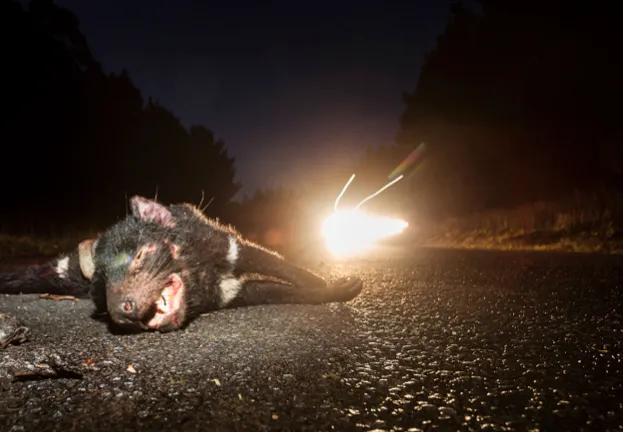One idea to reduce roadkill now being tested in Tasmania is ‘virtual fencing’ – devices, placed at 25m intervals, that are activated by headlights to produce a high-pitched noise and a flash of light with the aim of discouraging nearby animals from wandering onto the highway.
Roadkill is a massive issue in Australia’s island state, with 160,000 mammals, including endemic Tasmanian devils, hit every year.
But it’s a problem in Britain, too – the Mammal Society has put the death toll at 100,000 foxes, 100,000 hedgehogs, 50,000 badgers and 30–50,000 deer. Could virtual fencing work here?
Andreas Seiler, of the Infra Eco Network Europe (IENE), which aims to reduce wildlife casualties from vehicle collisions, says that, while the idea is appealing, there is little scientific evidence to suggest it works.
A study published in 2016 revealed that wildlife reflectors (as they also called) reduce roadkill by just one per cent.

“One problem derives from the assumption that animals will react to a tiny light impulse or an artificial sound but ignore the sound of the approaching vehicles or the light of the headlights,” Seiler says.
But he adds that some promising results have been obtained in Italy with acoustic devices that play the sound of barking dogs.
Find out more about the save the Tasmanian Devil Program Roadkill Project.
